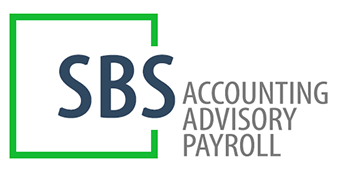Closing the fiscal year is more than just a compliance task—it’s a vital process that reflects the company’s financial integrity and transparency. Preparing annual reports is a recurring obligation, but each cycle presents unique challenges that demand diligence, accuracy, and a thorough understanding of accounting standards.
When Is a Financial Statement Required?
While the preparation of annual financial statements is a statutory requirement for most entities, there are various situations outside the regular cycle that also necessitate reporting. These include:
- Interim balance sheets for dividend distribution or capital increases
- Final reports during mergers, demergers, or conversions
- Opening and closing reports during liquidation or dissolution
Each of these scenarios requires similar steps to the annual close, emphasizing the need for robust internal processes.
Key Focus Areas for Year-End Reporting
Fixed Assets: Verification and Reconciliation
- Ensure that capitalized assets are correctly transferred from construction-in-progress to the relevant asset accounts.
- Recorded depreciation should align with general ledger balances and be properly posted to both the asset and cost accounts.
- Decommissioned assets must be fully removed from books—both gross value and accumulated depreciation—with related gains or losses properly reflected in income or expense accounts.
- Cross-check balances between asset registers and ledgers to support the fixed asset movement table in the notes.
Inventory Valuation
- Use a well-integrated accounting and inventory system to facilitate accurate inventory valuation.
- Conduct year-end physical counts and reconcile inventory records to the ledger.
- Remember to include uninvoiced services as part of the inventory if they meet criteria for capitalizing.
Receivables: Accuracy and Revaluation
- Only validated and confirmed invoices should be recorded as receivables.
- Foreign currency receivables must be revalued using the balance sheet date exchange rate.
- Overpayments by customers should be shown under other liabilities.
- Assess and reverse impairment losses in line with your accounting policies.
Other Essential Closing Activities
Cash & Cash Equivalents
- Ensure cash-on-hand is backed by a verified cash count record.
- Reconcile bank balances with official statements dated to the reporting date.
- For foreign currency balances, revaluation should reflect year-end exchange rates per your accounting policies.
Loans, Investments, and Securities
- Secure balance confirmations from counterparties for loans and borrowings.
- Use investee financials to support the valuation of shares and participations.
- For market-traded securities, rely on closing market prices.
Equity and Retained Earnings
- Compare registered capital against official company registration records.
- Post retained earnings from the prior year’s profit after tax to retained earnings.
- Reconcile any tied reserves created for asset acquisitions funded from development reserves.
- Record declared dividends based on the date of decision.
Liabilities and Provisions
Provisions
- Ensure appropriate documentation exists for both mandatory and discretionary provisions.
- Plan for future reversal of provisions, particularly those with known timelines.
Supplier Balances
- Treat vendor overpayments as receivables in the balance sheet.
- Disclose balances with related parties in dedicated balance sheet lines for transparency.
Short-Term vs. Long-Term Liabilities
- Rollover the upcoming year’s instalments of long-term debts to current liabilities.
- Adjust classification between long- and short-term accounts accordingly.
Payroll and Taxes
- Outstanding wages from December should match the January payout.
- Cross-check tax balances with the latest authority-reported figures.
- Before calculating income taxes, finalize all other adjustments to determine pre-tax earnings.
- Prioritize local business tax calculations before corporate income tax entries.
Accruals and Deferred Items
- Review active and passive accruals to ensure prior year entries have been reversed as needed.
- For multi-year accruals in foreign currency, account for any unrealized FX differences as part of year-end revaluation.
Deferred Tax: A New Opportunity
As of 2024, businesses preparing standalone financial statements under Hungarian GAAP may optionally include deferred taxes in line with IFRS principles. This offers enhanced comparability but is not mandatory—each entity must decide its adoption.
Income Statement Accounts: Final Review
- Investigate any unusual balances—such as credit balances on expense accounts or debit balances on revenue accounts.
- Check alignment between revenue and associated costs (COGS, intermediary services, etc.).
- Ensure asset transactions (sales, disposals) are reflected in the appropriate income or expense lines.
- Properly present results of FX revaluation and self-produced inventory.
Final Checklist and Audit Considerations
Before closing:
- Validate key reconciliations using tools like Hungary’s OBR platform.
- Determine whether an audit is required based on thresholds in the Accounting Act: for 2025, exemptions apply to companies with average revenues below HUF 600 million and fewer than 50 employees over two years.
Conclusion
Year-end reporting is a complex process, blending regulatory compliance with a snapshot of financial health. Paying attention to detailed reconciliations, classifications, and valuations is key to producing a reliable and accurate annual report. Whether preparing for an audit or simply upholding best practices, diligence now ensures fewer surprises later.






Comments are closed.